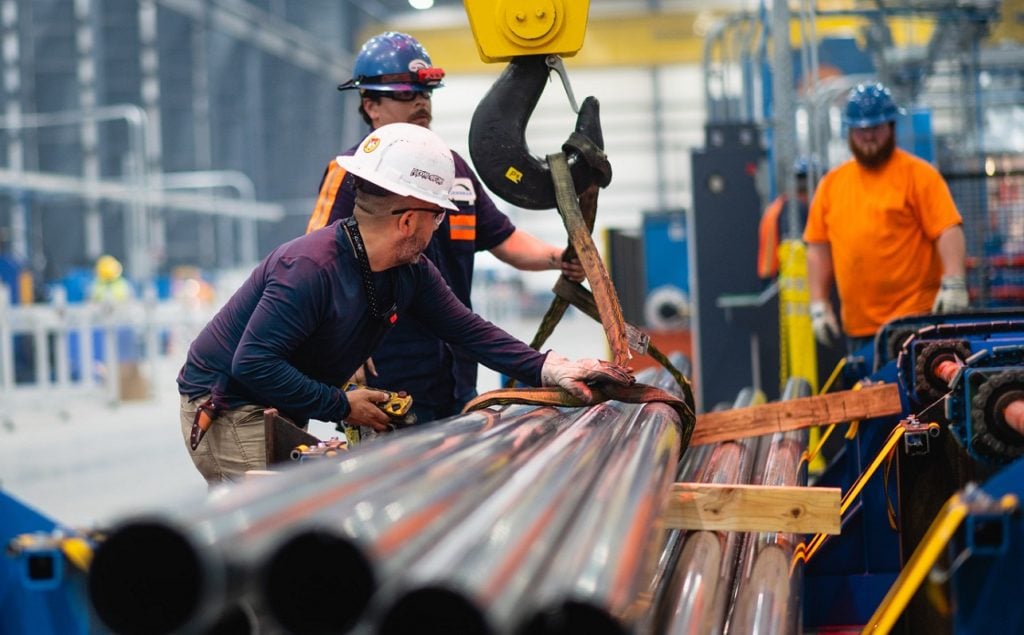
The US has introduced a flat 25% tariff on all imported steel and aluminium in an effort to boost US manufacturing capabilities.
Yesterday (11 March), the US president, Donald Trump, reinstated Section 232 Tariffs, which will see the 25% tariff on steel applied. Earlier in the day, Trump had threatened to double the steel and aluminium tariff to 50% for Canadian imports as part of increasing tension between the North American states, but the president has since reverted tariffs back to the original 25% figure.
Try Premium for just $1
- Full premium access for the first month at only $1
- Converts to an annual rate after 30 days unless cancelled
- Cancel anytime during the trial period
Premium Benefits
- Expert industry analysis and interviews
- Digital access to PV Tech Power journal
- Exclusive event discounts
Or get the full Premium subscription right away
Or continue reading this article for free
It is also worth noting that this impacts global imports, not just those from Canada. Australia, which exports around 10% of its steel and aluminium to the US, asked to be exempt from the tariffs. However, this request has been brushed aside.
The countries of Argentina, Australia, Brazil, Canada, Japan, Mexico, South Korea, Ukraine and the UK, in addition to those in the EU, had all previously been exempt from the full 25% steel tariff. However, this has now been revoked, with the White House claiming that the “US inadvertently created loopholes that were exploited by China and others with excess steel and aluminium capacity.”
The US currently imports most of its steel and aluminium from Canada and Mexico. On average, roughly 2 million metric tonnes of steel and 0.45 million metric tonnes of aluminium entered the US every month last year.
Of that average monthly figure, 0.7 million tonnes of steel and 0.25 million tonnes of aluminium came from Mexico and Canada, according to the US International Trade Administration.
Tariffs could have implications for the US solar PV market
Although the move has been noted as a means to support US-based manufacturing, its introduction could have impacts on the US solar PV market, by driving up the cost of imports of the crucial metals.
The US solar industry uses steel for solar tracker and racking manufacturing, and several US companies have established supply deals with US steel producers. Tracker manufacturer Nextracker, in particular, has established US manufacturing bases in partnership with steel producers, which could potentially insulate it from future price changes.
Aluminium is the primary material used for solar module frames. According to data from the Solar Energy Industries Association (SEIA) trade association, the US annual nameplate module production capacity has reached 50GW. With some exceptions, like steel module frame producer Origami Solar, the majority of these modules use aluminium frames.
As with many of Trump’s early policy changes, the long-term impact of these tariffs on the solar industry and the US more broadly remains to be seen.
The PV manufacturing industry downplayed the impacts of Trump’s initial tariffs on Mexico, Canada, and China (premium access), though some warned of procurement challenges ahead.






